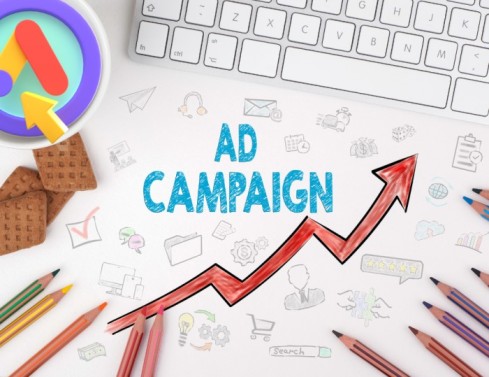Running a small business is difficult, especially if you’re starting. There’s a lot to learn, grasp, and unpack. A solid online presence is essential for any small business in the United States. However, with so much competition, naturally reaching your target audience can feel like an impossible challenge.
Most importantly, you must stretch every dollar to get the most out of your marketing budget. However, while many marketers and small business owners are concerned that their limited budgets will not allow them to compete with large spenders in Google Ads, this is not always true.
This is where Google Ads come in. Google Ads is an effective advertising tool, allowing you to display customized ads in front of potential customers who are actively looking for items and services similar to yours.

Here’s your 2024 guide to mastering Google Ads and obtaining qualified leads for your US-based small business.
Google Ads enables you to:
- Reach new audiences.
- Boost website traffic and increase leads.
- Convert website traffic into clients.
1) Setting things up for Success – Goals & Budget
Don’t jump directly into creating the campaign; step back, revise your goals, and finalize the budget. Understanding the following questions will help you to determine what you’re trying to accomplish.
Do you want to Boost a website? Or increasing sales online, too? Generate leads and inquiries?
Increase your brand’s visibility and local exposure.
The more you know about your objectives, the easier it will be to structure your campaigns and set up a bidding strategy. Now, honestly, tell yourself what your budget is. Google Ads charges based on a pay-per-click (PPC) model, meaning you’re only charged when someone clicks on your ad. However, one must remember that the campaign reach might not be high if you are a bootstrapped startup with limited spending.
2) Keyword Research – Your Golden Ticket
Choose the ideal keywords for your brand. But don’t just choose the cheapest keywords. To be successful with Google Ads, you’ll need to balance higher-cost, high-reward, and lower-cost keywords. Consider what people in the United States would type to search for a business like yours. To know the popular search strings that people use with low competition, Google Keyword Planner and SEMrush can come in handy.
Pro Tip: Stop targeting lengthy keywords. To target people with higher buying potential, use long-tail keywords (longer phrases).
3) Compelling Headlines & Descriptions: It builds on capturing people’s attention within the shortest time possible
Let us be honest: you are fortunate if the customer spends a few seconds looking at your Ads. That’s where your knowledge of digital marketing is going to kick in. Choose the proper headline format and provide high-quality headlines underlining your unique selling proposition (USP).
Headline Magic Formula:
[Target Audience] + [Benefit] + [Targeted Keyword]
For example, if you’re a local plumber in San Francisco, your headline could be: ”Fast and reliable plumbing services for San Francisco homeowners, always available 24/7”.
Secondly, write engaging ad descriptions with details that expand your headline and convince the viewer to click. Add a powerful CTA such as ‘Get a Free Quote Today!’ or ‘Book Your Appointment Today!’
4) The Art of Targeting: Promise of Targeted Keywords That Reach the Right Audience at the Right Time
Google Ads is a versatile advertising platform that can provide many targeting opportunities to display ads to the most appropriate audiences. Which includes:
- Location Targeting: Business consumers, students, and teachers who want information within your physical store’s limits.
- Demographic Targeting: Reach users based on Age & Gender, Income, Occupation, Education Level, and others.
- Interest Targeting: Categorise consumers according to internet activity and preferences.
- Device Targeting: You can target your ads for desktops, smartphones, or tablets, whichever is your preference.
When used together, these targeting features enable exact campaigns that place your ads in front of very well-targeted audiences in the USA.
5) Optimizing for Success: To navigate this journey, the process needs to be defined in three steps: Monitor, Analyze, and Refine.
It is also important to note that Google ads are not an automatically run system where you do not need to monitor anything. The management needs to monitor the system, evaluate it occasionally, and improve it where necessary. Monitor your campaign statistics of clicks, the number of times the ads were viewed, and the convertibility rate. Here’s what to watch closely:
- Click-Through Rate (CTR): The percentage of people interacting with your advertisement by clicking on the link after coming across it. This is because a lower CTR might mean your ad copy is ineffective.
- Conversion Rate: The percentage of users who complete the specific activity on your Website, for example, file the contact form or purchase after clicking on your ad.
- Cost-per-acquisition (CPA): The amount of money you spend per lead or sale from your Google AdWords campaign.
Thus, by considering these metrics, one can find the weak points and adjust the campaigns to achieve a higher ROI.
Grow your small business by unlocking Google Ads.
However, it is essential to remember that writing a successful Google Ads campaign is an art that requires both time and experience. At Business Digitaly, we are a group of dedicated digital marketers eager to help emerging small businesses in the US succeed in the digital world.
Feeling overwhelmed? Let’s chat!
Contact an expert from our company for a free consultation and discover the benefits of Google Ads Services for your business. Let us assist you in developing a unique campaign that attracts your potential customers.



Pingback: Google Ads vs. LinkedIn Ads | Business Digitaly